posted on August 20, 2013
Our chase tour group was playing around with some mediocre thunderstorm activity in the western Oklahoma Panhandle late this afternoon. We were aiming to shoot some lightning around sunset with some soft and colorful light, but it wasn’t working out as we were hoping. There were a bunch of messy and wet cells in our vicinity east of Keyes, in eastern Cimarron County, and these were not photogenic. I decided to punch through a heavy shower or two to the west in order to get just west of the storms, where there might be some decent light. We drove west through heavy showers and a somewhat flooded Keyes, and continued 8 miles WSW to the intersection of U.S. 56 and U.S. 64/412 between Keyes and Boise City. We had just cleared the rain, and the sun was minutes away from setting. I jumped out of the van with my camera and looked back to the east, where a bright double rainbow stood out nicely against a dark and stormy background. And, I immediately noticed a strange THIRD rainbow which stuck up oddly from the base of the brighter, inner, primary rainbow. I managed several shots with the 21mm lens, and crossed the road to get one with the road sign. The rainbow(s) were already dimming rather rapidly, and the odd third rainbow was very faint by the time I had crossed the road, less than a minute after getting out of the van.
The second image on this page, image 7201, was my first photograph of the rainbows. I left this one basically “as shot” here, with zero adjustments or enhancements in the image software. The settings — ISO 800, f3.5, 1/30 sec, handheld. Yes, it was rather dark and I had to crank up the ISO. The other shots had similar settings, and I enhanced these a bit to bring out the rainbows a bit more.
I had never seen the strange “third” rainbow before, despite seeing hundreds of rainbows in the past 20 years or so of chasing. After some quick research, I found a few other examples online of this, and apparently these are quite rare and only recently explained. There is a rare phenomenon called a “reflection rainbow,” where “sunlight reflects off a body of water before reaching the raindrops.” The picture for a reflection rainbow looked similar to what we viewed near Keyes on Wikipedia, but there was no body of water nearby to cause this. Then I came upon the rare “twinning rainbow,” which seems to form when showers of different intensities merge. One shower has significantly larger raindrops than the other shower, providing two rainbows coming out of the same base. From ScienceDaily.com on August 6, 2012: “Sometimes two rain showers combine,” Jarosz said. “When the two are composed of different sized raindrops, each set of raindrops produces slightly deformed rainbows, which combine to form the elusive twinned rainbow.”
The Science Daily article also states that sometimes the twinned rainbow is observed in “combination with a double rainbow”, and that is obviously what we photographed west of Keyes at sunset on August 7. The “twinned” rainbow was about the same brightness as the (outer) double rainbow, and its color sequence is not reversed (as for the outer double rainbow).
It is also possible that these photographs depict “double twinned” rainbows — it looks like there may be a very faint “twinned” rainbow attached to the outer/secondary rainbow. Do you see it? I found one other example online of a “double twinned rainbow”, or a “quadruple rainbow”. These, obviously, are extremely uncommon!

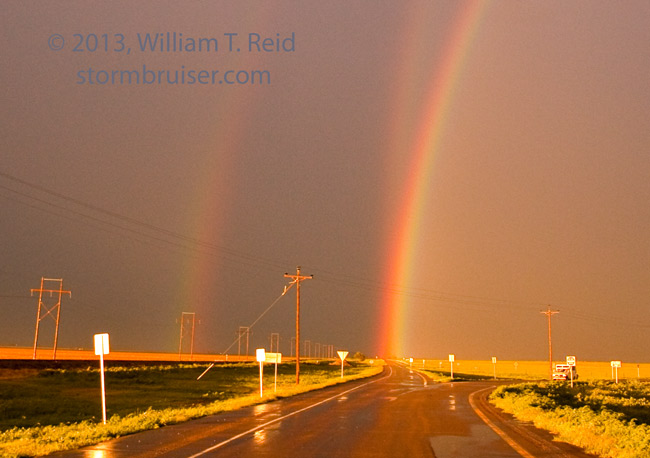
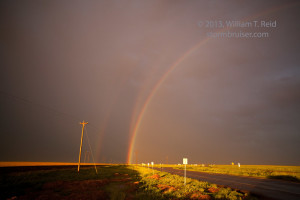
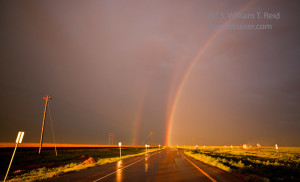
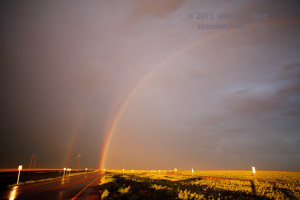
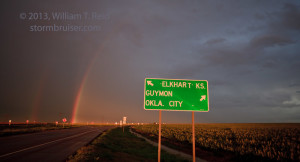
Leave a Reply
You must be logged in to post a comment.